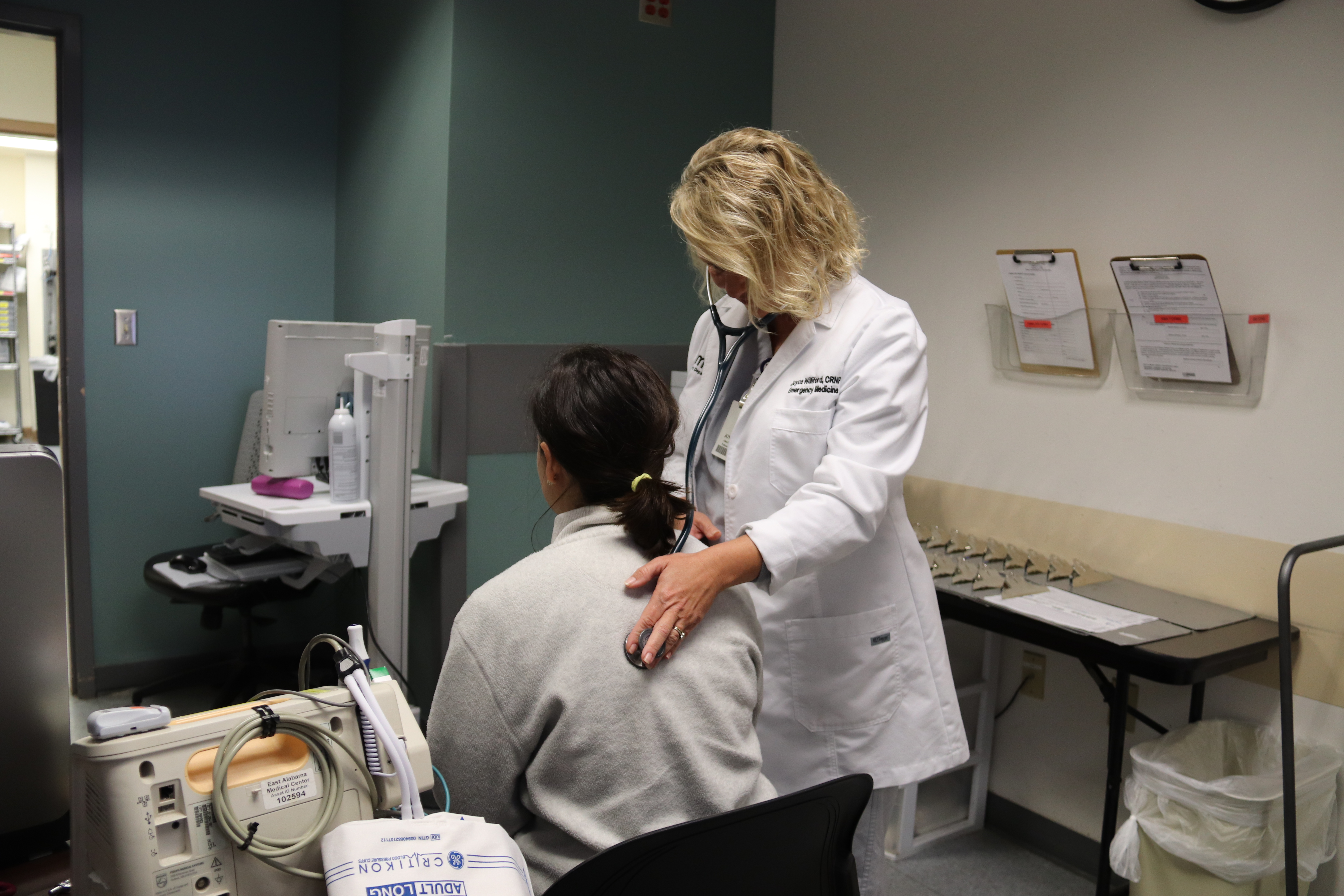Special to the
Opelika Observer
East Alabama Medical Center has adopted a new approach to triage in the Emergency Department. The hospital’s emergency department sees nearly 50,000 patients a year now, an average of 137 patients a day. To help these patients move more quickly through the department, a “provider-in-triage” model was started. Just as the name suggests, a provider—in this case, a nurse practitioner—is stationed in triage to more quickly assess a patient and determine the next step.
The main priority in triage is to prioritize and sort patients based on symptoms and chief complaints. As each patient enters the emergency department, they are sent through triage, where a registered nurse takes vital signs, asks the patient about medical history and completes necessary paperwork.
With this new model, the patient is then seen by the provider in triage as well as the provider’s nurse, who further assess the patient and determine whether x-rays, lab work or other tests are needed. The provider in triage team then begin completing orders put in by the provider, including drawing blood and starting IV fluids.
As lab work and other ordered tests return to the provider in triage to be read, patients may be escalated to a higher priority depending on what is found. If a patient needs to be admitted for further treatment, the physician will already have the lab work and results from tests ordered earlier in the visit by the provider in triage.
Nancy Murner, a CRNP has worked in EAMC’s ED for more than 20 years, is one of the providers who evaluates patients in triage. As a nurse practitioner, Murner is able to do just about everything that a physician can do, including diagnosis and treatment. In triage, she can order diagnostic testing and write prescriptions.
If the visit turns out to be not as emergent as first thought, she can fully treat and discharge patients in the triage area without the patient having to spend extra time in the emergency department. This significantly decreases that patient’s wait time as well as that of other patients.
“Having a provider in triage has helped us catch things earlier, such as bleeds, breaks and strokes, and helped us prevent these types of emergencies from escalating had a patient had to wait longer to be seen,” Murner said.
Murner added that as the provider in triage, she monitors those who are in the waiting room to ensure patient safety.
“Our main goal in using the provider in triage model is to not only help patient flow through the ED, but also to make sure no adverse events happen as patients wait in the lobby,” said EAMC Director of Emergency Services Sharon Gess. “When the lobby gets full, we want to ensure those who are waiting are safe and we do what we can to decompress the situation.”
Having this up-front team is quite different from the traditional emergency department model, which typically has patients wait until a bed opens and they can see a physician or a nurse practitioner.
“Having the provider and nurses in triage expedites patient care, and helps us more quickly transition patients out of the ED or to the back for further treatment,” Gess said.
Currently, there is a provider in triage in the EAMC emergency department from 9 a.m. to 9 p.m., which is generally the time frame in which the department sees the highest patient volume.

